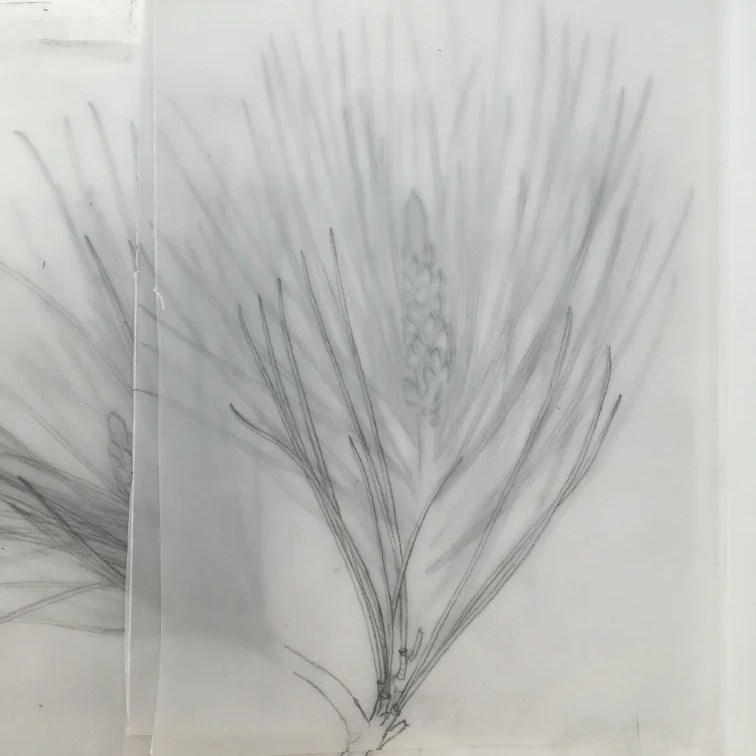
One of the attractions of botanical illustration for me is learning more about the flora and fauna in my local area. During lockdown we spent a lot of time walking in the areas south of Croydon near to our house, and discovered new green spaces which we had not explored before.



En-route from Lloyd Park to Addingham Hill Viewpoint, I found that we were walking under a magnificent row of pine trees. Bordering Oaks Lane, they towered over us. The cones were impressively large, with many hanging underneath the branches, some almost parallel to the boughs. I decided to find out more about the trees and to attempt my first pine study.
After some research, I identified the species as Pinus radiata, although I cannot find any records online identifying the trees in this location.

I began with sketchbook work and learnt more about the genus, in particular that pines are gymnosperms. This means that they do not flower but instead seeds develop inside the rigid structure of a female cone. When this cone dries out, the seeds are able to fall out. Smaller, male cones produce the pollen required for these seeds to develop. Both female and male cones will be found on a pine tree.
I decided that the first painting of this species would be an illustration of a male cone. The biggest challenge was going to be drawing the mass of needles, so I chose to use layers of tracing paper to create more manageable layers to draw.


This painting was clearly going to be a challenge; I needed to practice the layering of the needles and began to develop a painting of a single stem with a developing male cone as the focus. To achieve aerial persepective, I began by painting in the background layers of needles lightly using more blues within my palette of colours. I then worked on the needles a layer at a time, increasing the intensity of the layers as I moved to the foreground. I was then able to begin to add the stem and male cone.




The final plate has achieved the effect I intended; a mass of needles surrounding the core structure of the cone and stem.


